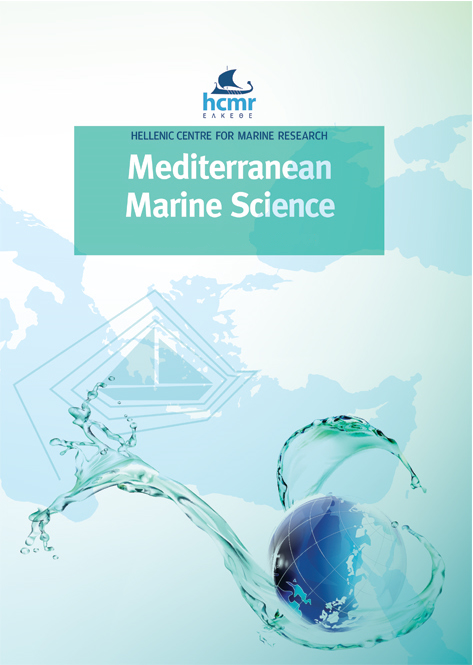Small-scale fishery catch composition in Rhodes (Eastern Mediterranean Sea)
Abstract
Trammel net and boat-seine experimental fishing samplings were carried out seasonally, over a rocky-sandy and a Posidonia oceanica habitat respectively, in the coastal waters of Rhodes, south-eastern Aegean Sea, Greece, between 2019 and 2020. Fish catch composition, abundance and biomass were investigated as a contribution to the qualitative and quantitative monitoring of the fish assemblages in the artisanal fishery in this Greek marine region most affected by biological invasion. A total of 56 native and 11 alien fish species were captured. Five invasive species Fistularia commersonii, Pterois miles, Siganus rivulatus, Siganus luridus and Lagocephalus sceleratus were recorded using both fishing gear. In trammel nets, the alien to native fish species ratio was 1:2.87 with eight allochthonous species composing 43% of the total abundance and greatly exceeding native species biomass with the most dominant being F. commersonii, P. miles, S. rivulatus and S. luridus. Boat seine samples were dominated by Spicara smaris and Boops boops, which accounted for 84% and 56% of total abundance and biomass, respectively, while the alien to native fish species ratio was 1:5.1. The 10 Lessepsian fish, i.e., fish that have entered the Mediterranean Sea via the Suez Canal, identified on a Posidonia seabed represented a small proportion of the total abundance (3.4%), while their biomass reached 17% of the total catch, with a prevalence of F. commersonii. Among alien fish on P. oceanica, S. rivulatus exhibited the greatest abundance, followed by F. commersonii, Parupeneus forsskali and S. luridus, with small but not negligible densities of Pteragogus trispilus and Torquigener flavimaculosus. The abundance of Pterois miles over the rocky-sandy habitat was remarkable. Results indicate a transitional shift in fish catch composition with introduced species competing with natives for food and space (i.e. between introduced siganids and Sparisoma cretense, Sarpa salpa, between the recently introduced P. forsskali and mullids, and between introduced P. miles and scorpaenids), further influenced synergistically by environmental and anthropogenic factors. The Total-Standard length and Total weight-Total length relationships and their applications in fisheries data for the allochthonous fish are briefly discussed.
Article Details
- Come citare
-
KONDYLATOS, G., PERDIKARIS, K., KAOUKIS, I., PATATOUKOS, I., CORSINI-FOKA, M., CONIDES, A., & KLAOUDATOS, D. (2023). Small-scale fishery catch composition in Rhodes (Eastern Mediterranean Sea). Mediterranean Marine Science, 24(3), 586–600. https://doi.org/10.12681/mms.32418
- Fascicolo
- V. 24 N. 3 (2023): VOL 24, No 3 (2023)
- Sezione
- Research Article
Authors who publish with this journal agree to the following terms:
- Authors retain copyright and grant the journal right of first publication with the work simultaneously licensed under a Creative Commons Attribution Non-Commercial License that allows others to share the work with an acknowledgement of the work's authorship and initial publication in this journal.
- Authors are able to enter into separate, additional contractual arrangements for the non-exclusive distribution of the journal's published version of the work (e.g. post it to an institutional repository or publish it in a book), with an acknowledgement of its initial publication in this journal.
- Authors are permitted and encouraged to post their work online (preferably in institutional repositories or on their website) prior to and during the submission process, as it can lead to productive exchanges, as well as earlier and greater citation of published work (See The Effect of Open Access).












